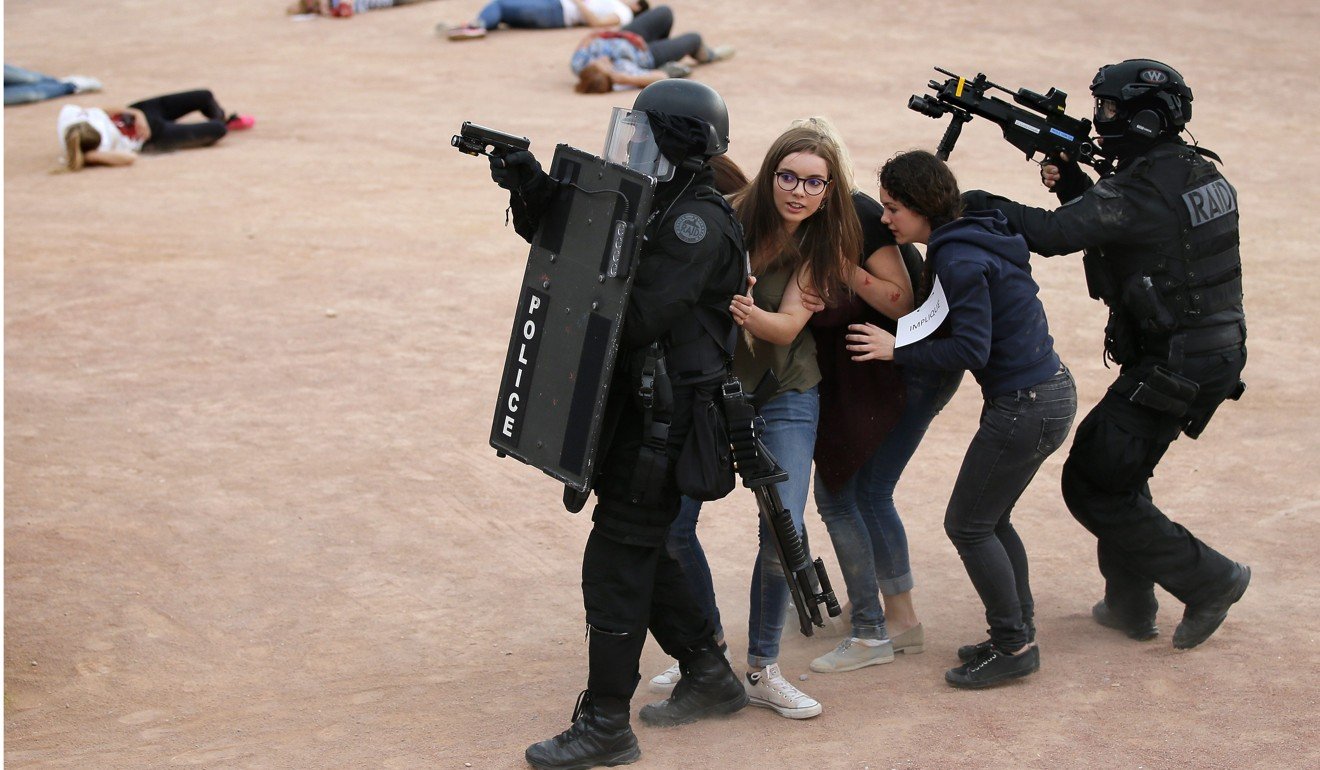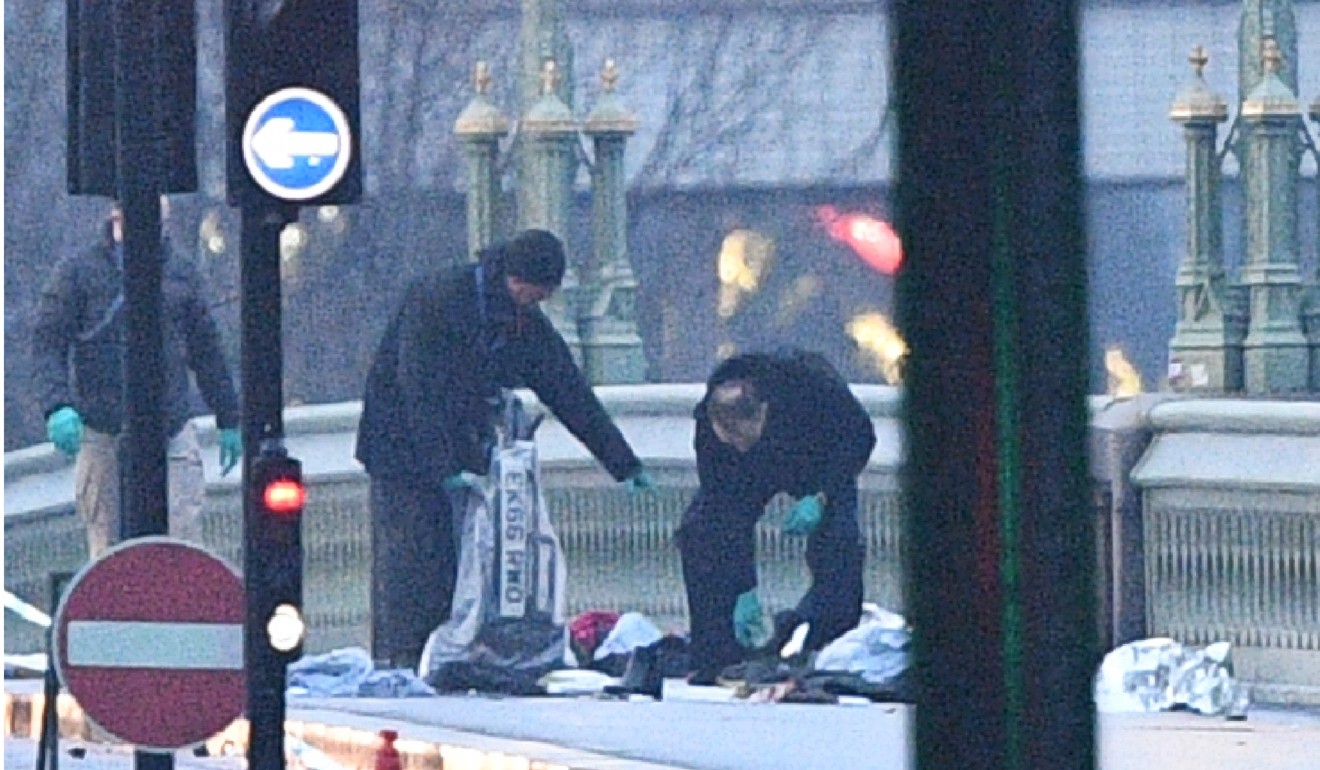
Islamic State lone wolves: the risk in Hong Kong’s strategy
Police were right to raise the spectre of a terrorist attack, but there is a downside to a civilian-based approach
Despite their name, so-called “lone wolf” terrorists need not work alone; they can be organised into “wolf packs”. Both terms describe terror cells that operate without the knowledge or financial support of their parent body.
Yet while separated from their central group, Islamic State (IS) lone wolves and wolf packs seem to often strike on cue when called upon, indirectly, by those leading their movement.
According to Barak Mendelsohn, associate professor of political science at Haverford College and a senior fellow at the Philadelphia-based Foreign Policy Research Institute: “Between October 2015 and August 2016, radicalised individuals, as well as ‘wolf packs’, carried out over 20 attacks in response to Islamic State’s call to indiscriminately kill ‘non-believer’ civilians.”

The terror attacks of IS lone wolves need to be understood as acts fuelled by desperation by those without the necessary moorings to their immigrant societies.
For example, according to some reports, the lone wolf attack by an Uzbek national in Stockholm, Sweden, that killed four in April happened after the perpetrator’s application to be a legal resident was rejected.
Those who join the ranks of IS in Asia often do not want to participate in the economic rat race, especially when their background and education do not allow them to get even menial jobs.

The Middle East and North Africa, where more than 70 per cent of the population is under the age of 30, also provides fertile ground for youth to be radicalised by peers or through the internet.
Research has found that some lone wolves, having been inspired by what they read online, often plan attacks that even the al-Qaeda leadership rejects, since the resulting rampage would result in the death of Muslims.
Is Hong Kong ready to combat global terrorism?
However, IS has no such misgivings – it encourages radicals to lash out in almost all directions, and is perfectly happy to receive an acknowledgement on YouTube or Facebook.
The Taliban were trained in religious schools in Central Asia and in Pakistan – places almost devoid of hope due to high unemployment.
Thus, when Pakistan’s Inter-Services Intelligence agency worked closely with the Taliban to reclaim Afghanistan after the withdrawal of Soviet forces in 1989, the “students of religion” jumped at the chance. Within a decade, they had become a ferocious fighting force.

In Europe, authorities say many current Islamic radical terrorists were first driven to the margins of society, forced to practise what French political scientist Gilles Kepel and others refer to as “garage Islam” due to public ridicule of their faith.
Such Muslims are reduced to living in ghettos – incidentally places where Jews were once consigned and separated from the masses – that instil a sense of hopelessness.
Belgium exports many radicals to fight for IS in Syria and Iraq who hail from neighbourhoods that are deprived of jobs and offer Muslims only a low social status.
Almost no first-generation Muslim immigrants in Europe – sold on the dream of a better life in the 1950s – are involved in terror. It is third-generation Muslims, who have seen such dreams shattered, that form the ranks of radical Islam.
Has Chinese pressure forced Pakistan U-turn on anti-India terror groups?
Only the lucky few manage to break through social barriers, such as the famed footballer Zinedine Zidane. His family is from Algeria and his success hinged solely on his footballing talent.
If Hong Kong or any cosmopolitan city does not want to face the constant spectre of citywide shutdowns from threats posed by lone wolves and wolf packs, there has to be more vigilance. Authorities have urged civilians to be more mindful of any potential terrorist activities.
But left to their own devices and without proper education, members of the public can easily cross the line from vigilance to harassment, prejudice, discrimination and fear-mongering.
Thus, as Hong Kong police justifiably attempt to raise the alert level against a possible IS attack, the powers that be also need to understand the underlying risk of a civilian-based defence.
One of these risks is polarisation, of us against them, which the terrorist groups want to foment in order to recruit even more terrorists into their ranks. Understanding the potential downside of a civilian-based strategy is part of successfully understanding the nature of both terrorism and radicalisation.

